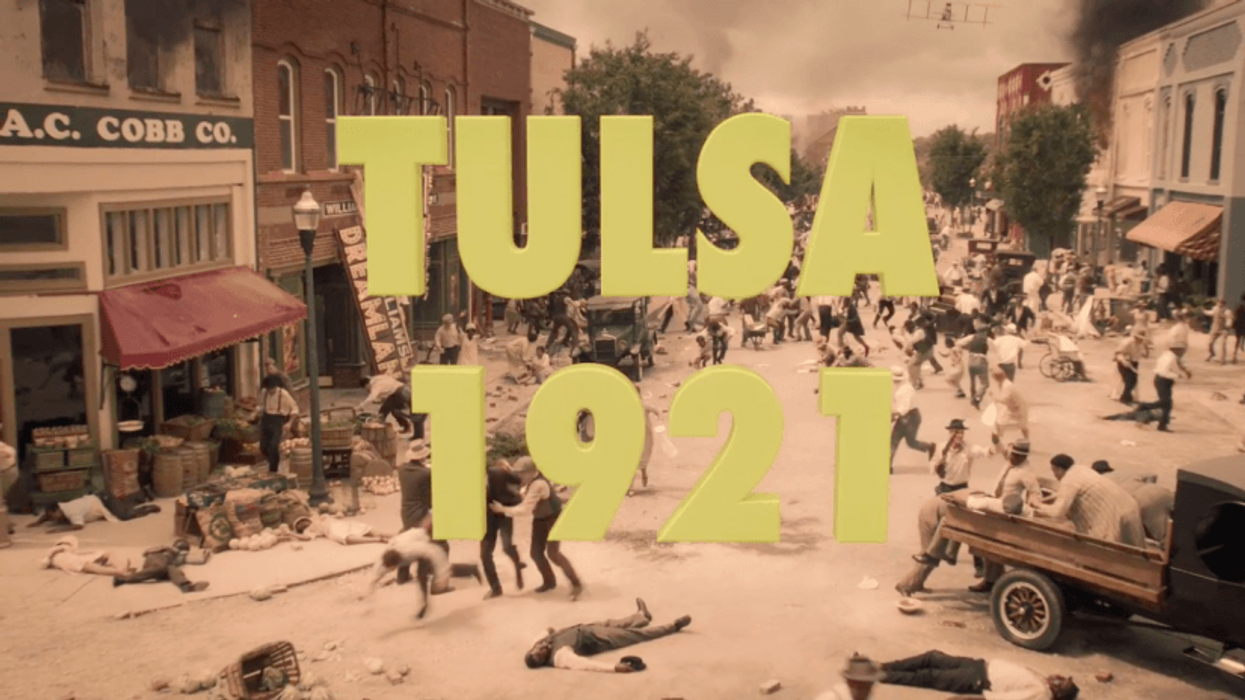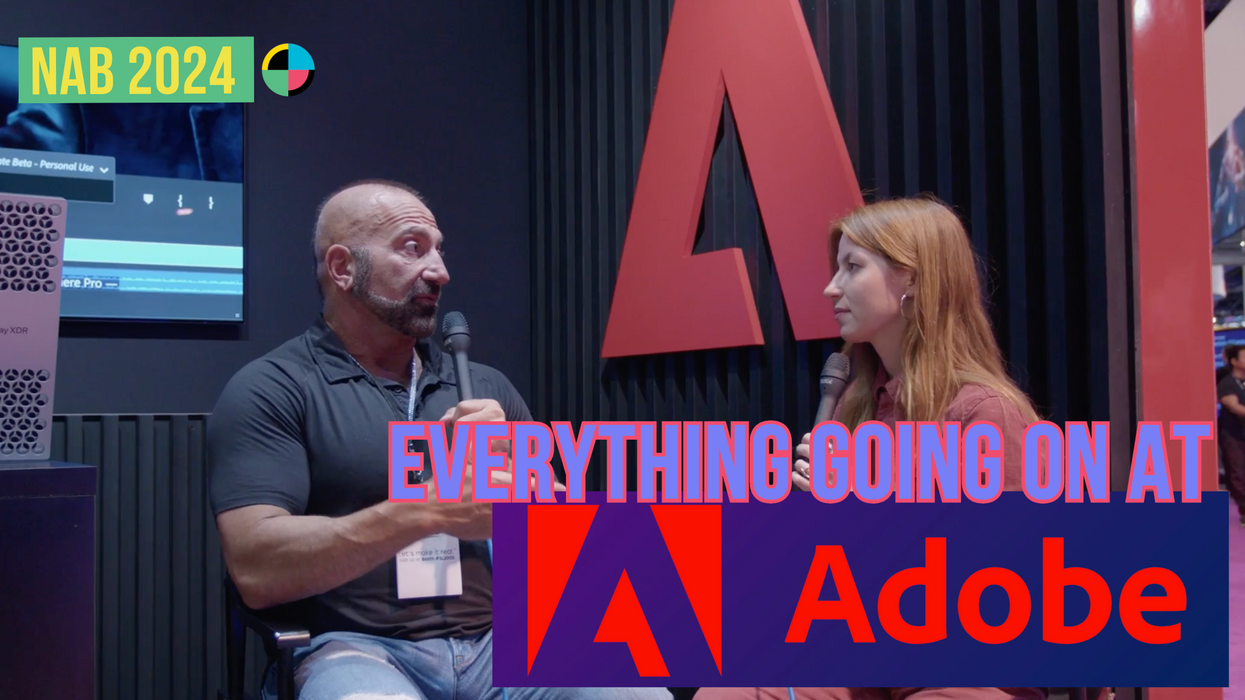How 'Watchmen' Pulled Off the 1921 Tulsa Massacre
Watchmen debuted on HBO Sunday night and kicked off with a piece of U.S. history many have forgotten. Here's how they wrote and directed a massacre.

Damon Lindelof has never shied away from talking about hard things. His last HBO series,The Leftovers, was all about the existence of God and the afterlife. But when it came time to tackle his favorite graphic novel of all time, Watchmen, he wasn't sure he was the right person for the job.
That's because he found that the most relevant application of the graphic novel's inditement of the cultural climate had to do with the way we see race in America. So how does a rich white guy tackle a subject that privilege has kept generally out of his life, minus the headlines?
The answer is as complicated as the question.
It takes care, ambition, understanding, and the willingness to listen and learn. Plus an incredible cast, crew, and writers' room.
Let's look at Watchmen'scold open and talk about how they pulled it off.
How 'Watchmen' Pulled Off the 1921 Tulsa Massacre
Watchmen is a graphic novel about an alternative American history, but the television show didn't have to take liberties with one of the worst instances of violence recorded in human history. In fact, the massacre is rarely talked about in history classes -- if at all.
What was the 1921 Tulsa massacre?
Memorial Day weekend, 1921. A young black man is accused of assaulting a white woman in an elevator. A white mob wants to lynch him. A gathering of African-Americans tries to stand guard outside the courthouse.
Shots were fired and chaos ensued. I urge you to read more about it on History or in Ta-Nehisi Coates’s “The Case for Reparations.”
In summary, over the course of 18 hours, a white mob attacked a predominately black neighborhood -- called Black Wall Street -- in Tulsa, Oklahoma. It was a domestic terrorism plot that, sadly, succeeded. Hundreds of black businesses were burnt to the ground as the Ku Klux Klan used firebombs, airplanes, and an organized militia to burn 35 square blocks of the city and murdering an estimated 100 - 300 people. Thousands more would be displaced.
This event is still not taught in Oklahoma schools, though there have been talks to have it enter the curriculum.
And this event is also the opening scene of HBO's new show, Watchmen.
How did the show do it?
Pilot episode director Nicole Kassell had never heard of the massacre until reading the script and neither had her assistant, who's from Oklahoma!
When Lindelof learned about this event, his reaction was:
“I was like, My God, how did this happen?...I can’t believe this enclave of African-American businesses, prosperity, culture, movie theaters, confectionery, mechanics, art was completely obliterated in the space of 48 hours.”
So why was this important to be features in Watchmen?
The original comic was about the Cold War and the egos and politics that almost ended humanity. Lindelof sees that same stupidity in the racism facing the world now.
"What is creating the most anxiety in America right now? And for me the answer is undeniably race," Lindelof said in an interview with NBC News. "Superheroes cannot defeat racism."
With that in mind, they set out to make an emotionally moving beginning to their TV show.
In an interview with Vulture, Kassell says she consulted the book The Burning: Massacre, Destruction, and the Tulsa Race Riot of 1921, which she praised for its “incredible detail from many different voices.” Doing historical research helped her make a detailed shot list for how she saw the sequence and wanted to visualize it. But that wasn't enough. Location scouts and the production team actually visited the site of the massacre and worked out real logistics.
They did more and more research into the event. Looking for photos and newspapers from the time.
It was important to also include the exposition in the story in a natural way. To do that, Kassell was able to organically use a newspaper headline (above) to show the reason for the massacre to those watching, without having someone spell it out.
But dramatizing something so awful also needs emotional planning.
Lindelof says they shot the scene in Georgia on the 97th anniversary of the massacre. This was purely coincidence, but the timing also needed to be stated. So Lindelof wrote a letter to everyone on the cast and crew, educating them on what happened -- as well as explaining to them why they had to handle things with care. People died. Their legacy needs not only to be remembered but also not sensationalized.
That's a delicate line to walk.
They had boards detailing the history on set and tried to be as reverential as possible.
All of the shots of the family's escape were filmed in extended takes, with cameras on long lenses hidden throughout the set to capture different vignettes of brutality. They were then edited together to add to the confusion and chaos of the story.
How does a director approach this material?
In an interview with Slate, Kassel said:
"I remember reading how Ava DuVernay did the bridge sequence in Selma. How Spielberg did Saving Private Ryan. As a film person, I had been studying those sequences and I definitely remember reading that Ava had that set blessed. We happened to be filming on the 97th anniversary. Our Day One of production was Day One of the massacre. We had a priest come and bless the set.."
What can we take away from this?
It's exciting and engaging to see genre material work in the most important conversation of our times. It's nice to see how Lindelof engages with audiences and takes his time to present history with grace and accuracy. Even if the idea of the show is mostly alternative history.
When you're working on your own project, do the research!
The more you are about the subject the more your pages will shine.
What's next? Read Lindelof's comments on Watchmen
Damon Lindelof had to adapt his favorite comic for his new HBO show and update the story based on our culture now. Here's how he avoided all the toxic nostalgia doing it. Click to learn.
















